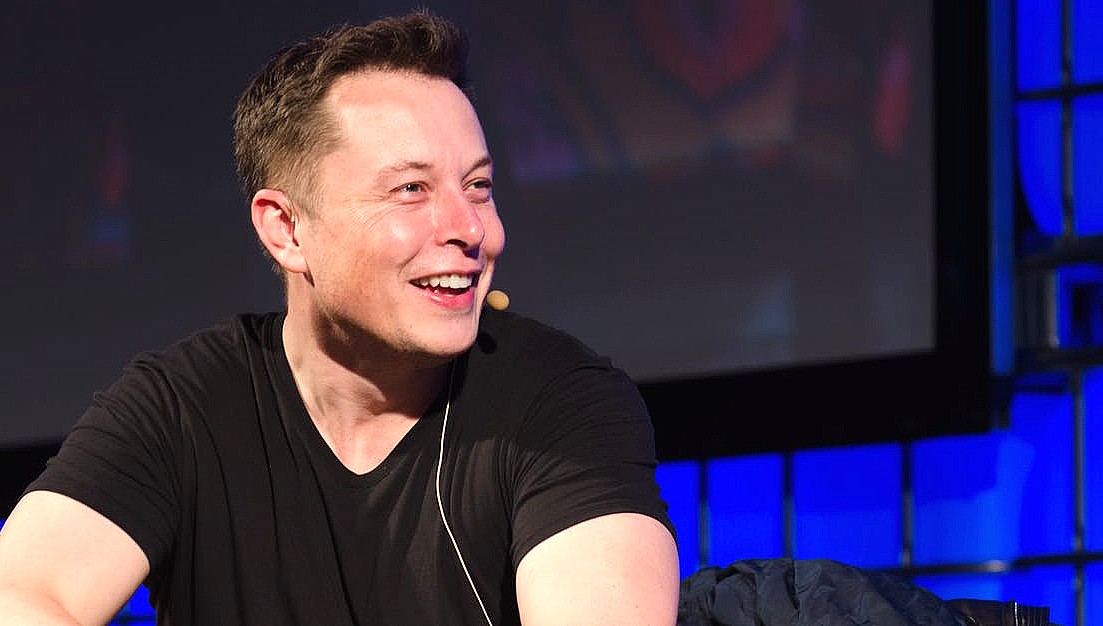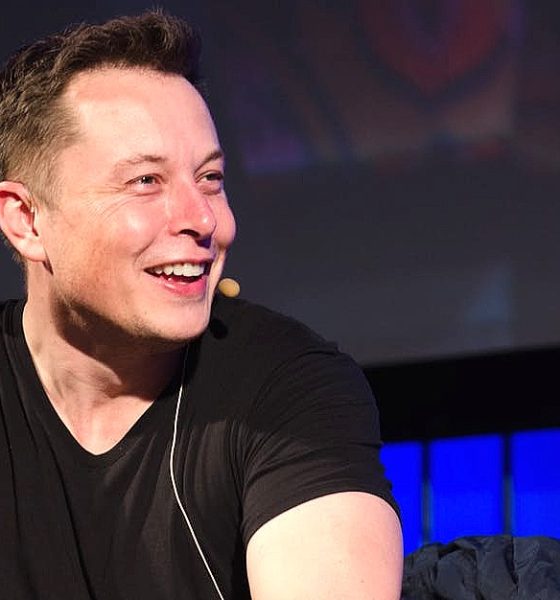

Investor's Corner
Did Elon Musk hint that Tesla has broken up with Bitcoin?
Tesla CEO Elon Musk tweeted several memes yesterday that seemed to indicate that the electric car company may have ended its relationship with the controversial cryptocurrency Bitcoin. Still, the CEO’s cryptic crypto tweets don’t outweigh past statements made by Musk in the past several weeks, including one that indicated Tesla wouldn’t let go of its Bitcoin stash but did it?
In December 2020, Tesla bought $1.5 billion worth of Bitcoin, a Cryptocurrency that gained mainstream notoriety several years ago after an outlandish and meteoric rise to a massive valuation. But, instead of looking at it as a simple investment, Tesla did what Tesla does: made it a statement and refined several of its’ executive’s job titles: Musk became Tesla’s Technoking, and CFO Zachary Kirkhorn assumed the role of “Master of Coin,” two titles that were made official in a filing with the SEC.
Tesla soon started accepting Bitcoin as a payment option for its cars and energy generation and storage products. It was a relatively bold move because while many large retailers and well-known companies accept Bitcoin as a payment option, being able to buy a vehicle with a direct payment to the manufacturer wasn’t overwhelmingly popular, even in 2021.
But soon after the Bitcoin barrage, Tesla backpedaled slightly. Just a few months after deciding to accept Bitcoin as payment, the company suspended this program, citing environmental concerns as the primary reasoning. “We are concerned about rapidly increasing use of fossil fuels for Bitcoin mining and transactions, especially coal, which has the worst emissions of any fuel,” Musk said in a statement on Twitter. “Cryptocurrency is a good idea on many levels, and we believe it has a promising future, but this cannot come at great cost to the environment.”
Elon Musk: Tesla is suspending Bitcoin payment options until it’s more sustainable
It was estimated at one point that Tesla had nearly doubled its investment thanks to a surge in Bitcoin’s cost. Its $1.5 billion investment had swelled to be worth $2.8 billion, according to some reports. This solidified Tesla’s decision in Musk’s statement that the company would not be letting go of its Bitcoin, pledging to hold on and reintroduce the ability to purchase products “as soon as mining transitions to more sustainable energy.” In addition, musk reassured Twitter followers on May 19th that the company has “Diamond Hands,” a term utilized for someone or something that is prepared to hold a position despite long or short-term volatility. Someone with Diamond Hands is usually someone who, despite setbacks in a stock or crypto’s price, plans to hold their position until an end goal is assumed.
However, June 3rd’s Twitter fiasco from Musk hinted that the company might have gotten rid of its Bitcoin holdings.
#Bitcoin ? pic.twitter.com/lNnEfMdtJf
— Elon Musk (@elonmusk) June 4, 2021
— Elon Musk (@elonmusk) June 4, 2021
Musk is a man known for a comedic sense of humor, a cryptic style of Tweeting, and a sarcastic but fun attitude about his business. If Tesla did sell any of its Bitcoin, it would be a considerable blow to the Crypto’s valuation, especially as this rumor has already circulated through the financial world. Bitcoin has dropped over 6% in the last 24 hours.
What do you think? Let us know in the comments below, or be sure to email me at joey@teslarati.com or on Twitter @KlenderJoey.

Investor's Corner
Tesla stock closes at all-time high on heels of Robotaxi progress

Tesla stock (NASDAQ: TSLA) closed at an all-time high on Tuesday, jumping over 3 percent during the day and finishing at $489.88.
The price beats the previous record close, which was $479.86.
Shares have had a crazy year, dipping more than 40 percent from the start of the year. The stock then started to recover once again around late April, when its price started to climb back up from the low $200 level.
This week, Tesla started to climb toward its highest levels ever, as it was revealed on Sunday that the company was testing driverless Robotaxis in Austin. The spike in value pushed the company’s valuation to $1.63 trillion.
Tesla Robotaxi goes driverless as Musk confirms Safety Monitor removal testing
It is the seventh-most valuable company on the market currently, trailing Nvidia, Apple, Alphabet (Google), Microsoft, Amazon, and Meta.
Shares closed up $14.57 today, up over 3 percent.
The stock has gone through a lot this year, as previously mentioned. Shares tumbled in Q1 due to CEO Elon Musk’s involvement with the Department of Government Efficiency (DOGE), which pulled his attention away from his companies and left a major overhang on their valuations.
However, things started to rebound halfway through the year, and as the government started to phase out the $7,500 tax credit, demand spiked as consumers tried to take advantage of it.
Q3 deliveries were the highest in company history, and Tesla responded to the loss of the tax credit with the launch of the Model 3 and Model Y Standard.
Additionally, analysts have announced high expectations this week for the company on Wall Street as Robotaxi continues to be the focus. With autonomy within Tesla’s sights, things are moving in the direction of Robotaxi being a major catalyst for growth on the Street in the coming year.
Elon Musk
Tesla needs to come through on this one Robotaxi metric, analyst says
“We think the key focus from here will be how fast Tesla can scale driverless operations (including if Tesla’s approach to software/hardware allows it to scale significantly faster than competitors, as the company has argued), and on profitability.”

Tesla needs to come through on this one Robotaxi metric, Mark Delaney of Goldman Sachs says.
Tesla is in the process of rolling out its Robotaxi platform to areas outside of Austin and the California Bay Area. It has plans to launch in five additional cities, including Houston, Dallas, Miami, Las Vegas, and Phoenix.
However, the company’s expansion is not what the focus needs to be, according to Delaney. It’s the speed of deployment.
The analyst said:
“We think the key focus from here will be how fast Tesla can scale driverless operations (including if Tesla’s approach to software/hardware allows it to scale significantly faster than competitors, as the company has argued), and on profitability.”
Profitability will come as the Robotaxi fleet expands. Making that money will be dependent on when Tesla can initiate rides in more areas, giving more customers access to the program.
There are some additional things that the company needs to make happen ahead of the major Robotaxi expansion, one of those things is launching driverless rides in Austin, the first city in which it launched the program.
This week, Tesla started testing driverless Robotaxi rides in Austin, as two different Model Y units were spotted with no occupants, a huge step in the company’s plans for the ride-sharing platform.
Tesla Robotaxi goes driverless as Musk confirms Safety Monitor removal testing
CEO Elon Musk has been hoping to remove Safety Monitors from Robotaxis in Austin for several months, first mentioning the plan to have them out by the end of 2025 in September. He confirmed on Sunday that Tesla had officially removed vehicle occupants and started testing truly unsupervised rides.
Although Safety Monitors in Austin have been sitting in the passenger’s seat, they have still had the ability to override things in case of an emergency. After all, the ultimate goal was safety and avoiding any accidents or injuries.
Goldman Sachs reiterated its ‘Neutral’ rating and its $400 price target. Delaney said, “Tesla is making progress with its autonomous technology,” and recent developments make it evident that this is true.
Investor's Corner
Tesla gets bold Robotaxi prediction from Wall Street firm
Last week, Andrew Percoco took over Tesla analysis for Morgan Stanley from Adam Jonas, who covered the stock for years. Percoco seems to be less optimistic and bullish on Tesla shares, while still being fair and balanced in his analysis.

Tesla (NASDAQ: TSLA) received a bold Robotaxi prediction from Morgan Stanley, which anticipates a dramatic increase in the size of the company’s autonomous ride-hailing suite in the coming years.
Last week, Andrew Percoco took over Tesla analysis for Morgan Stanley from Adam Jonas, who covered the stock for years. Percoco seems to be less optimistic and bullish on Tesla shares, while still being fair and balanced in his analysis.
Percoco dug into the Robotaxi fleet and its expansion in the coming years in his latest note, released on Tuesday. The firm expects Tesla to increase the Robotaxi fleet size to 1,000 vehicles in 2026. However, that’s small-scale compared to what they expect from Tesla in a decade.
Tesla expands Robotaxi app access once again, this time on a global scale
By 2035, Morgan Stanley believes there will be one million Robotaxis on the road across multiple cities, a major jump and a considerable fleet size. We assume this means the fleet of vehicles Tesla will operate internally, and not including passenger-owned vehicles that could be added through software updates.
He also listed three specific catalysts that investors should pay attention to, as these will represent the company being on track to achieve its Robotaxi dreams:
- Opening Robotaxi to the public without a Safety Monitor. Timing is unclear, but it appears that Tesla is getting closer by the day.
- Improvement in safety metrics without the Safety Monitor. Tesla’s ability to improve its safety metrics as it scales miles driven without the Safety Monitor is imperative as it looks to scale in new states and cities in 2026.
- Cybercab start of production, targeted for April 2026. Tesla’s Cybercab is a purpose-built vehicle (no steering wheel or pedals, only two seats) that is expected to be produced through its state-of-the-art unboxed manufacturing process, offering further cost reductions and thus accelerating adoption over time.
Robotaxi stands to be one of Tesla’s most significant revenue contributors, especially as the company plans to continue expanding its ride-hailing service across the world in the coming years.
Its current deployment strategy is controlled and conservative to avoid any drastic and potentially program-ruining incidents.
So far, the program, which is active in Austin and the California Bay Area, has been widely successful.








